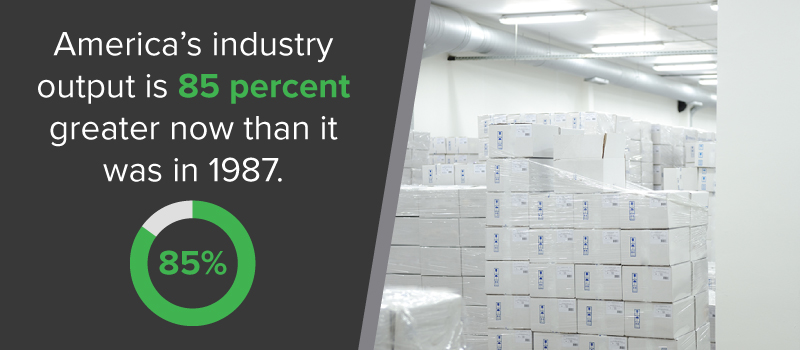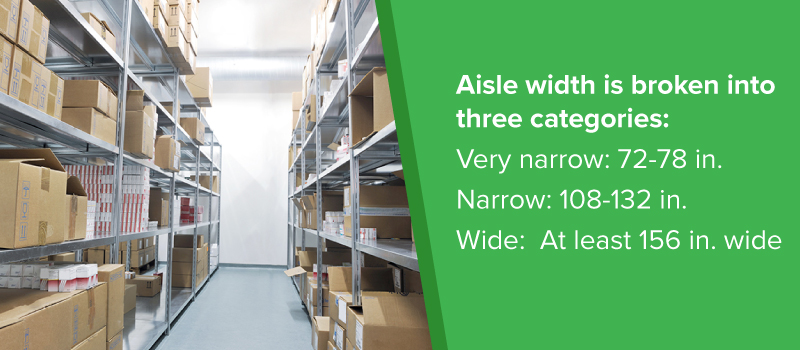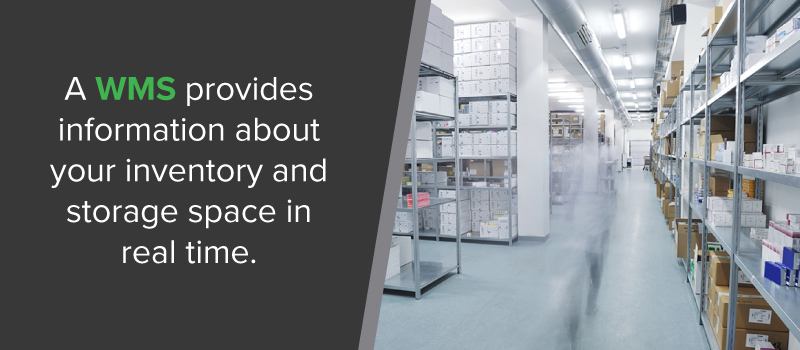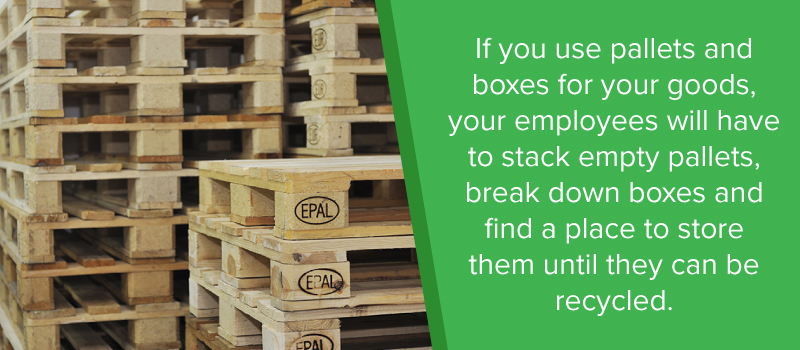When you go to work, are you engaged with your job? Overall, employee engagement began to fall during the 2008 recession, but it started to recover in 2011 as the national economy rebounded. As the economy continued its recovery, employee engagement reached 31.5 percent in 2014, its highest level since Gallup started tracking this performance indicator in 2000.
Like employee engagement, interest in warehouses as investment properties has increased in recent years. In fact, the Urban Land Institute placed industrial real estate at the top of the commercial property sector for investment and development for 2016. According to a report prepared by the Urban Land Institute, America’s industry output is 85 percent greater now than it was in 1987, which is leading investors to look closely at the industrial sector in today’s “new economy.” In the report, one industry insider claims, “Warehouse facilities for the new economy are the new retail; they bypass the retail channel and go directly to the consumer from the warehouse.”
Savvy warehouse managers have realized that they can further increase the engagement their employees have with their jobs and make their warehouse space more valuable in the eyes of their employers and potential investors by increasing their warehouse storage capacity. For some managers, this may mean using a third-party to store some of their inventory. Some warehouses use trailers for this purpose while others simply lease additional floor space in another warehouse.
When tapping a third-party for more space isn’t a viable option, managers often have no choice but to increase warehouse storage capacity within their own walls, using only the space that’s currently available to them. While implementing warehouse storage organization ideas to increase capacity may seem like a daunting task, doing so can yield some meaningful results that can reduce your operating costs and increase your bottom line.
Table of Contents
Why Optimizing Warehouse Space is Important
Even though improving employee engagement and making your warehouse more attractive to your employer or an investor are benefits that you may enjoy, increasing your warehouse’s storage capacity can produce additional benefits that are just as, if not more, significant. These benefits include the following:
- Saving Money: When you can store more items in your warehouse, it means you can order more products from your vendors in a single transaction. This gives you the chance to save money on bulk orders because suppliers will generally discount their price per unit when you buy products in certain quantities. If you normally order 100 widgets from a supplier at $1.00 per unit and your vendor offers a 25 percent discount on orders of 1,000 units or more, it’s obvious that you can save money on the products you need by purchasing more per order. Using the scenario described above, you can increase your warehouse storage capacity to accommodate 1,000 widgets and spend $750 on one order instead of spending $1,000 on ten separate orders for 100 widgets.
- Avoiding Missed Sales: By using some warehouse storage organization ideas to increase your facility’s storage capacity, you can minimize the chances that you’ll miss out on sales. Increased storage capacity means you can keep more products on hand, so you’ll be able to fulfill orders in a timely manner without accumulating backorders for your most popular items or risking sales.
- Increasing Employee Productivity: Increasing your warehouse storage capacity can make your employees more productive. More productive employees provide side benefits, which include decreasing your labor costs and increasing the number of orders your staff can fulfill in a given period of time.
- Improving Organization: If your current warehouse layout is forcing you to stock similar items in the same bin or you simply don’t have enough room for all of the items you’re carrying, it can be difficult to keep your warehouse organized. By optimizing your storage space to increase your overall capacity, you can improve the organization of your products. An organized warehouse can make it easier for your employees to find and pick products, which can reduce the amount of time it takes them to complete orders. An organized warehouse can also instill greater confidence in your vendors when they tour your facility, increasing the chances that they’ll continue to trust you to distribute their goods efficiently.
- Redesigning Floor Plan: Although managers often try to increase their warehouse storage capacity so they can accommodate a larger number of products or a bigger quantity of the items they already sell, some managers may increase their storage capacity in order to rework their floor plan. By increasing your storage capacity to free up some floor space, you can increase the width of your aisles, for instance. Aisle width influences the type of equipment your employees can use, as well as the number of people who can work in a single aisle at the same time.
In general, aisle width is broken into three categories, very narrow aisles measuring 72-78 inches, narrow aisles measuring 108-132 inches, and wide aisles which are usually at least 156 inches wide. By increasing your warehouse storage capacity, you can make adjustments to your floor plan so your aisles are the appropriate size for your building and products.
How to Determine Warehouse Capacity & Increase Storage Space
Even if you’ve run the same warehouse for years, you may not be familiar with its current warehouse storage capacity. While your physical walls may be in the same place as they originally were and your floor and ceiling may have the same measurements, your facility’s storage capacity may change over time as your inventory changes, new equipment is introduced, and your floorplan is redesigned.
Staying current with your warehouse’s storage capacity is important because it effects how you run your daily operations. Knowing your facility’s storage capacity is also helpful in instances when you’re trying to convince upper management that the space in your warehouse is no longer sufficient. If you know you don’t use all of your building’s storage space even during your peak sales periods, knowing your storage capacity can also reveal an opportunity for you to make additional money by leasing out a portion of your warehouse.
Even though measuring your warehouse storage capacity involves some basic math, it’s still not the easiest or most precise equation. To calculate your storage capacity, you’re going to figure the ratio of the cubic storage capacity of storage space divided by the total cubic volume of the part of your building that’s used for storage. To determine the volume of your storage area, you’ll measure the dimensions of its length, width, and maximum stack height, making allowances for things such as lights or sprinklers, which may reduce your maximum stack height.
Next, you’ll calculate a storage capacity for every storage area (such as every row or bin) in your warehouse and add them together. The number you end up with is your “theoretical” storage capacity. Your theoretical storage capacity is not your actual storage capacity because it doesn’t account for things such as the room necessary to move products or pallets in and out of their storage positions.
As an example, let’s say you run a 20,770 square foot distribution center that has pallet racks and two rows or carton flow racks. To determine your building’s entire warehouse storage area, you would multiply 20,770 by the height of the top of the load on the highest beam, which in this case is 20.6 feet. The result shows that your distribution center’s total storage capacity is more than 427,000 cubic feet.
Now, let’s say that you have a theoretical storage cube of just under 118,700 cubic feet. Dividing your warehouse’s total building cube into your storage cube would reveal that your layout and storage aides occupy about 27.8 percent of your building. This number is significant because it can help you identify areas in which you can better optimize your storage space by changing the width of your aisles, adjusting the orientation of your pathways or the size of your racks and shelving, or making some other changes.
Another important measure for you to consider is how well you use your available storage capacity to store your goods. This measure is critical because it can impact the equipment you decide to use to handle product, the amount of labor you need, your support systems, and your policies and procedures. Again, this measure is dynamic, meaning it will change in accordance with various factors, including the nature and size of your inventory and changing consumer tastes.
You can determine your utilization of storage capacity by calculating it as a percentage of your theoretical storage space. If you have a warehouse inventory management system, you can calculate your space use by running a report to identify the cubic volume of your inventory. You’ll then divide your inventory cube by your total theoretical storage cube.
For instance, let’ say you have a theoretical storage capacity of 100,000 square feet. Let’s also assume that your inventory cube is 37,000 cubic feet. To see how well you’re using your available storage capacity, simply divide 37,000 by 100,000.
Warehouse Organization Ideas
Now that you know how to measure your warehouse capacity and you’re familiar with the benefits that increasing your warehouse storage capacity can provide, you may be eager to learn ways to increase your warehouse’s capacity. Luckily, there are many warehouse storage organization ideas that you can implement in your facility.
Here are some ideas about how to increase storage capacity in your warehouse.
Use a Warehouse Inventory Management System
One of the most vital tools you have at your disposal to increase your storage capacity is a warehouse management system, or WMS. A WMS provides information about your inventory and storage space in real time. It can help you free up storage space by identifying obsolete inventory that can be donated or discarded. You can also use your WMS to organize the products in your inventory because your system will assign floor and shelving locations for your products based on their sales volumes and unit load dimensions.
You can use a modern WMS to manage your inventory at every point along the supply chain. Many warehouse management systems enable you to integrate your system with the platforms your suppliers use. This enables your vendors to see the amount of their goods that you currently have in stock. When your stock falls below a certain designated level, your suppliers can ship additional products to you automatically. A WMS can also generate purchase orders automatically when your inventory gets too low. By having these capabilities, a WMS can prevent you from having too much of certain products on hand, freeing up storage space you can use for other items or purposes.
Use the Right Shelves at the Correct Height
The type of shelves you can use to increase your facility’s storage capacity partially depends on the type of racking system you use, unless you’re using pallet floor storage and block stacking. No matter what kind or racking system you ultimately choose, be sure to position your shelves at a height that will prevent your employees from having to strain to reach the items they need to fulfill orders.
By changing your racking system, you have the opportunity to use more vertical space to increase your total storage capacity. You can also increase the rate at which your employees are able to store and remove items from shelves. Some of the racking systems that are available include:
- Single Deep Selective Racking Systems
- Double Deep Selective Racking Systems
- Push-Back Racking Systems
- Pallet Flow Through Racking Systems
- Drive-In Racking Systems
- Pallet Runner Shuttle Systems
- Flow Rail Systems
Use the Right Packaging
How do you package or store items on your shelves? In a typical warehouse, the items you receive are not packaged, which means they need to be kept in a storage container while they remain at your location. While some items may need to be stored in a large container because of their size or the volume you have in stock, others may require a smaller receptacle. If you’re using larger bins or containers unnecessarily, you can reclaim some of your storage space simply by using smaller containers.
Depending on the nature of your inventory, you may be able to use bulk bags as your packaging for warehouse storage. Unlike some Gaylord boxes, bulk bags can usually be stacked. This capability means using bulk bags can increase the amount of vertical space that you can use to store inventory while freeing up valuable floor space.
Many warehouse managers often overlook how bulk bags can help increase your storage capacity. If you use pallets and boxes for your goods, your employees will have to stack empty pallets, break down boxes and find a place to store them until they can be recycled. Depending on the volume of products you move, this may mean that a considerable amount of your floor space might be temporarily consumed by recyclable material on a semi-regular or regular basis.
Although bulk bags can also be recycled and repurposed, they don’t require as much storage space after you’ve used them. While pallets and boxes can only be stacked so high before they threaten the safety of your workforce, you can fold bulk bags and stack them several hundred high in a horizontal space that has the dimensions of only one pallet. In addition to freeing up floor space, using bulk bags can reduce your labor costs because you won’t have to pay anyone to break down boxes or move and stack empty pallets when you use bulk bags in your warehouse.
If you want to learn more about how bulk bags can increase your storage capacity and reduce your operational costs, contact Bulk Bag Reclamation today. Our management team has a total of more than 25 years of experience in the bulk bag industry. We’ve been refurbishing flexible intermediate bulk containers (FIBCs) to the highest industry standards for years, and we can develop an inventory storage solution that can increase your storage capacity.
With our centralized location in the heartland of the United States and our stock-and-release program, we provide reliable and convenient shipping to your location whenever you’re ready to replenish your inventory. We offer bulk bag reconditioning, repair and recycling services to warehouses across the country. Our extensive inventory of products includes the following reconditioned FIBC bags:
Our bags are strong enough to accommodate thousands of pounds of product in a single container, and they retain their shape even when they’re stacked. To learn more about how our bulk bags can free up space in your distribution center, contact Bulk Bag Reclamation today.
Do Some Housekeeping
While very few people enjoy housekeeping during a shift, it’s critical that you keep your warehouse clean and organized at all times. Doing so will not only protect the safety and well-being of your employees, it also has the potential to increase your warehouse’s storage capacity.
Just as pallets and boxes can consume valuable floor space, debris and clutter can also reduce the amount of room you have to store things. By making cleaning an ongoing task for all of your employees, you can prevent trash from accruing and optimize your storage space. One way you can inspire your staff to clean is by adopting the 5S method to ensure their workstations are well maintained and clutter is kept out of your aisles. The 5S method includes the following steps: sort, set in order, shine, standardize and sustain.
Change Your Shipping Supplies
You may be able to increase your warehouse storage capacity simply by changing the materials you use to ship your goods. A paper-based void fill system employs a single A 4-sized pack of paper to provide the same protection that three bags of polystyrene chips provide. By switching to the paper-void fill system, you wouldn’t have to use as much of your storage space for your shipping materials.
If you use an automated void reduction system, you may be able to reduce the amount of space reserved for shipping materials even further. With this kind of system, you could reduce the number of box sizes needed to ship your goods and you wouldn’t need to keep void fill in your warehouse.
With so many things you can do to increase your warehouse’s storage capacity, you may be wondering where you should start. We recommend that you take the first step and contact Bulk Bag Reclamation to learn how our products and services can help you free up space at your facility. You can share some basic information using our website, and we’ll prepare a free quote for you. Or, you can give us a call to discuss your warehouse needs in detail today. We look forward to partnering with you to increase your warehouse’s storage capacity soon.




